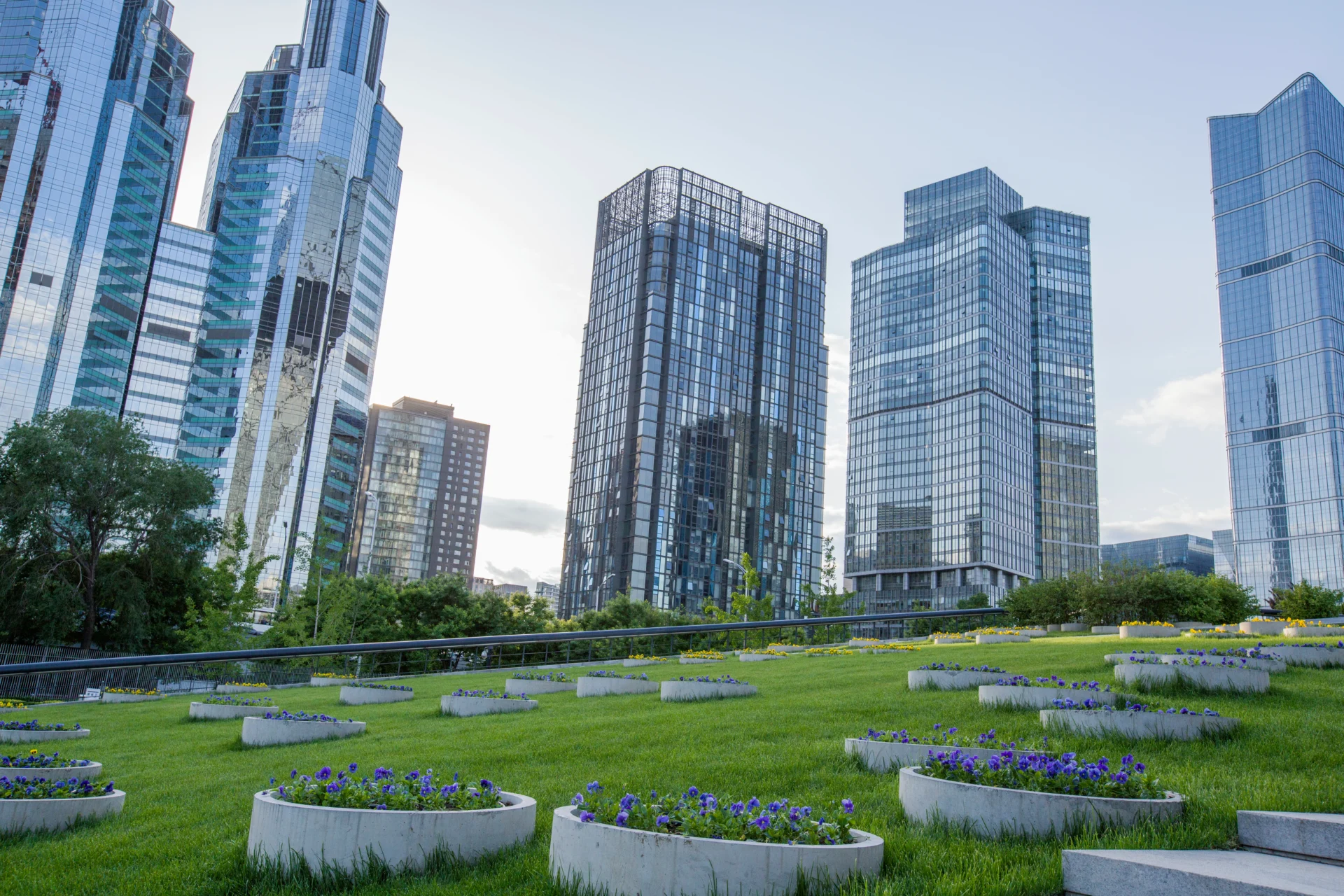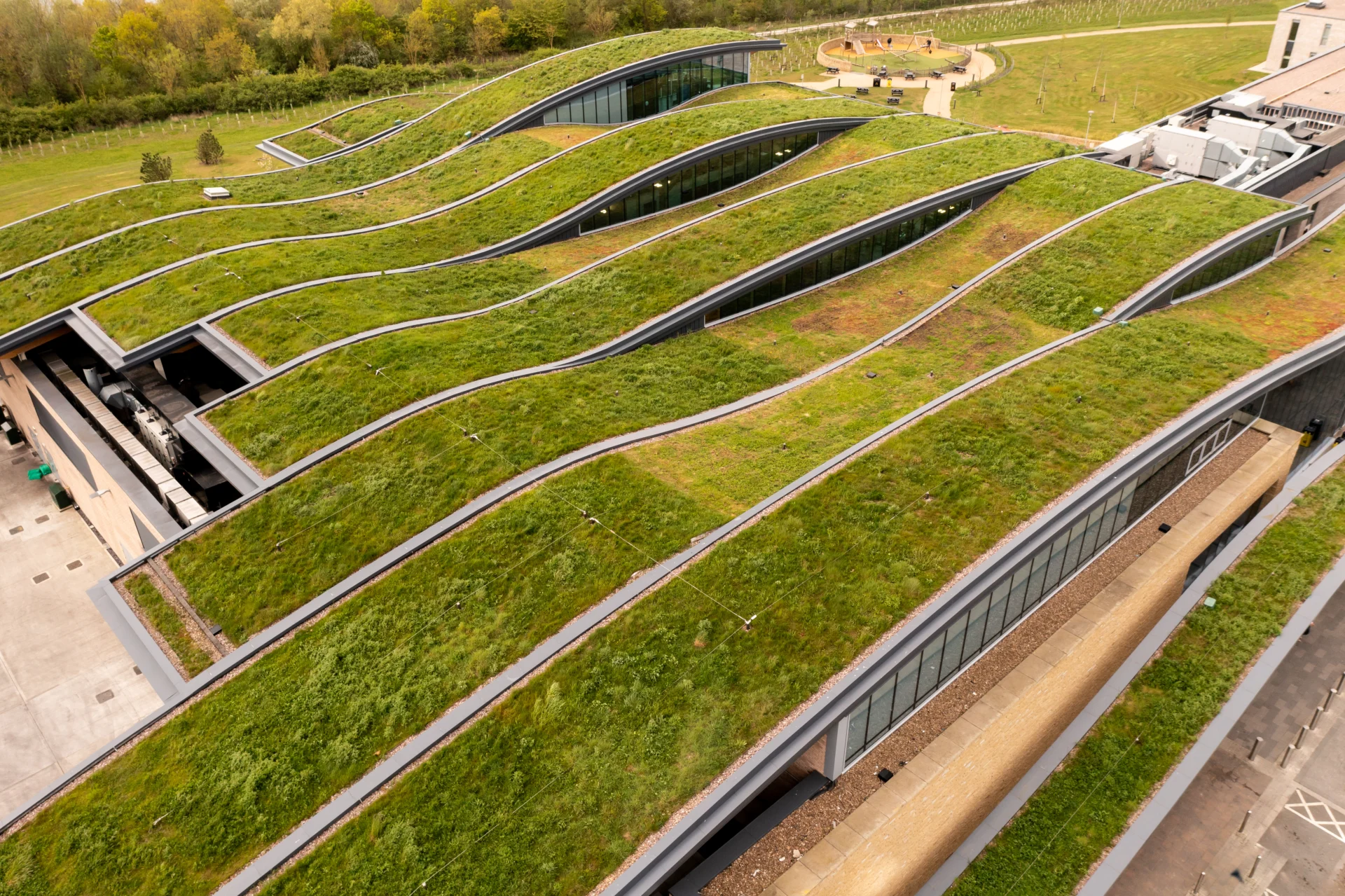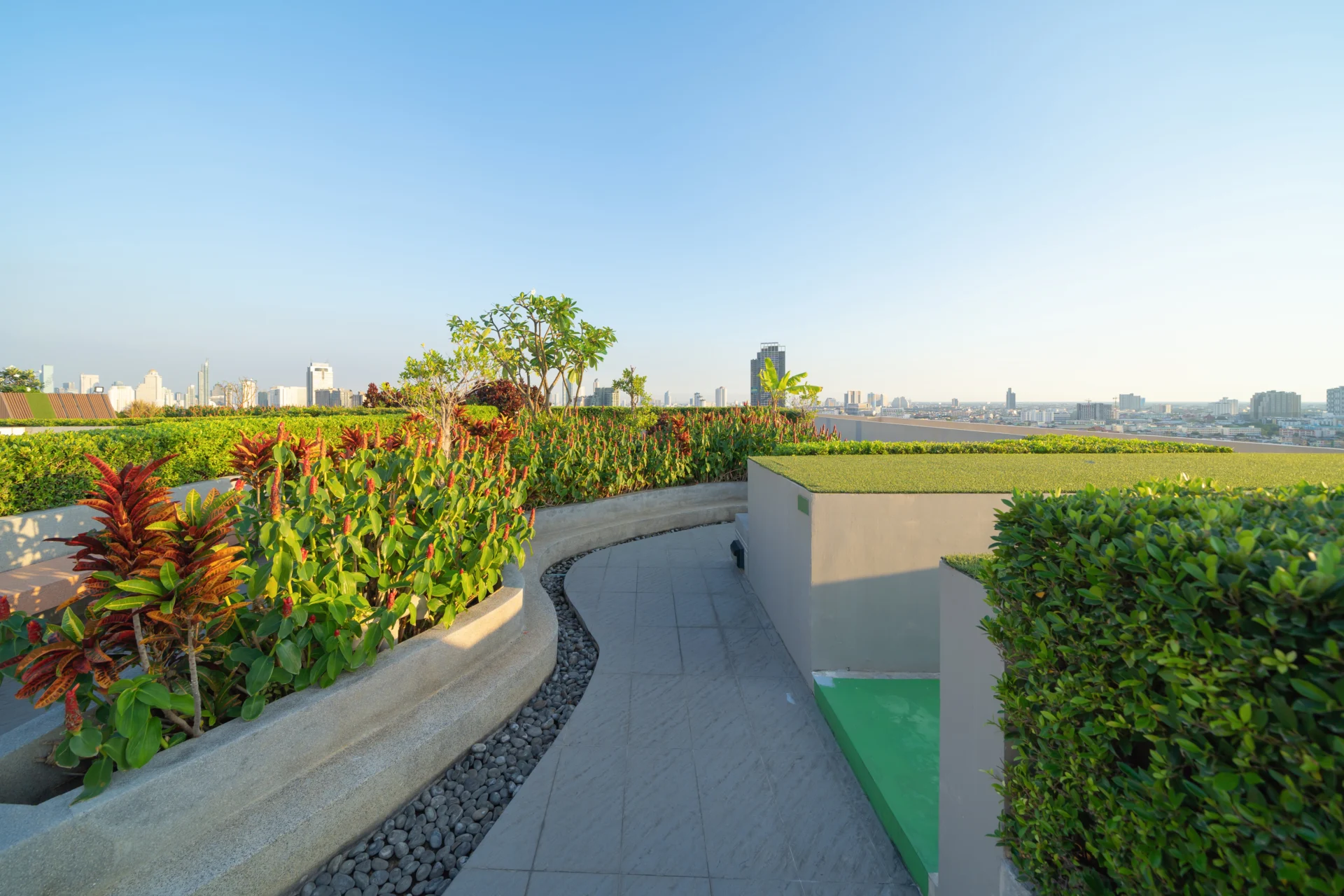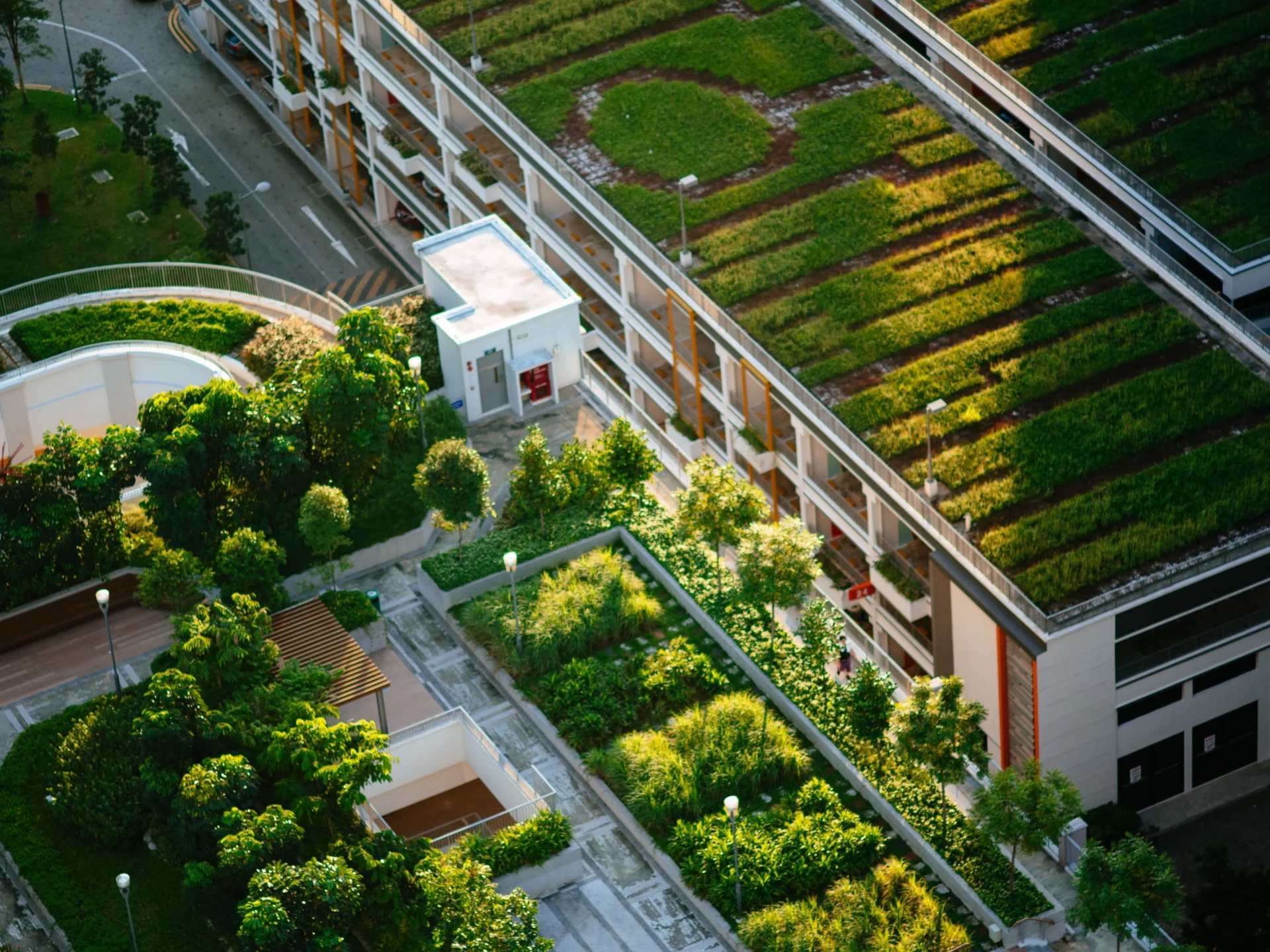
Imagine stepping into a rooftop garden high above the city with soft green carpet underfoot, gentle breeze, the city’s hum muted by foliage and soil. It feels like a sanctuary, isn’t it? That is the magic of green roofs where architecture does not just cover, but it breathes, nurtures, and contributes.
If you are considering a building, renovating, or simply want your property to stand for more than just looks, green roofs are one of the smartest, most beautiful investments you can make.
Let us walk you through what they are, why they matter now more than ever, and how Manon Design Studio helps you integrate them in ways that add value, meaning, and long-term return.
Let’s take a closer look!
What Are Green Roofs and Why They Are Essential
A green roof (also called a vegetated roof or living roof) is a roof partially or completely covered with vegetation and a growing medium, planted over a waterproof membrane.
They come in two main types:
- Extensive: Thinner growing media, lighter weight, often low maintenance.
- Intensive: Deeper soil, larger plants, sometimes walkable gardens.
Why now? Because climate pressures, rising energy costs, urban heat islands, and a growing appreciation for wellbeing are pushing sustainable architecture forward. Green roofs are no longer niche, they are being adopted globally as part of biophilic, resilient, and sustainable building practices.
For example, research in 2025 has shown green roofs bring measurable cooling, improved stormwater management, and energy savings.
The Real Benefits of Green Roofs
Green roofs deliver value in both visible and hidden ways. Here are the benefits people often do not expect and the ones they definitely love, including:
Environmental Performance

1. Reduce Urban Heat Islands
Rooftop vegetation helps cool roof surfaces and surrounding air. The U.S. Environmental Protection Agency (EPA) reports green roofs can reduce surface temperatures significantly and lessen the heat absorbed by buildings.
2. Stormwater Management
Green roofs are more than just an aesthetic statement, they are a living, breathing layer of sustainability. Beyond their visual appeal, these roofs play a crucial role in urban water management.
In some cases, these roofs can retain up to 75–80% of rainfall, significantly reducing runoff and easing the burden on drainage systems.
Check the data below - Sourced by Environmental Building Research Studies!
| Type of Roof | Average Retention | Retention at Peak Runoff |
| Standard Roof | 24% | 26% |
| Green Roof | 80% | 74% |
Compared to traditional roofs, green roofs are remarkably effective at managing rainwater. While a standard roof retains an average of only 24% of rainfall, a green roof can hold up to 80%. Even at peak runoff, traditional roofs manage about 26%, whereas these roofs retain roughly 74%.
This difference shows why green roof design is a key part of sustainable architecture. By slowing down water movement, these roofs help reduce flooding and ease the pressure on drainage systems. They also improve insulation, purify the air, and create a healthier environment.
In short, green roofs make buildings more eco-friendly while redefining how architecture connects with nature.
3. Energy Savings
Studies show that green roofs reduce cooling loads (especially in hot or dense urban areas) and help with insulation during cooler periods too. One experimental study showed up to ~30–70% reduction in energy demand in certain climates when these roofs are used.
Human and Property Value Benefits

1. Well-Being and Aesthetics
There is something soothing about a touch of green above the city. Green roofs bring life to otherwise empty rooftops, turning them into calm, beautiful spaces where people can breathe, relax, and feel closer to nature.
In dense neighborhoods, these living roofs offer a quiet escape; softening noise, cleaning the air, and giving your eyes a break from concrete. They do not just make buildings look better, they make us feel better too.
With every layer of greenery, green roof architecture reminds us that design is not just about structures, it is about creating spaces that nurture both people and the planet.
2. Longevity of Roof Infrastructure
One of the hidden strengths of green roofs lies in how they quietly protect what is beneath. The layers of vegetation act like a natural shield, guarding roofing materials from harsh sunlight, heavy rain, and temperature swings. By softening the impact of UV rays and extreme weather, these roofs also can extend a building’s lifespan, sometimes even doubling it.
Over time, that means fewer repairs, lower maintenance costs, and a roof that stays strong and beautiful far longer than traditional ones. It is a simple, elegant way for nature to return the favor to the structures we build.
3. Market Appeal
Properties with green roofs are perceived as premium assets because they show environmental consciousness and often offer usable outdoor amenity space. Renters or buyers often pay more or choose these properties over comparably priced ones without greenery.
Pros and Cons of Green Roofs
| Pros | Cons |
| Reduce energy costs and increase energy efficiency | Higher upfront installation costs |
| Extend roof lifespan and save on long-term roofing expenses | Heavier weight load on the structure |
| Increase property value | Require additional maintenance and time |
| Improve stormwater management | — |
| Enhance air quality | — |
| Reduce urban heat island effect | — |
| Naturally fire-resistant | — |
| Provide sound insulation and reduce external noise | — |
| Help regulate indoor temperature | — |
| Create natural habitats for wildlife | — |
| Meet green building standards | — |
| Offer opportunities for urban agriculture | — |
| Improve occupants’ well-being | — |
| Visually appealing and enhance building aesthetics | — |
As seen above, the benefits of these roofs far outweigh their challenges. They offer lasting value for the environment, the economy, and the well-being of communities. Choosing a green roof is not only a sustainable design decision, but it is an investment in a healthier, more resilient future.
2025 Trends in Green Roofs Architecture

Architecture in 2025 is pushing green roofs further, making them smarter, more efficient, and better integrated with overall design, including:
- Smart irrigation and monitoring systems: Sensors that adjust watering, control soil moisture, prevent leakage which are reducing maintenance and water waste.
- Blue-green roofs or hybrid systems: Combining these roofs with water storage components to manage rainwater. For example, cities like Amsterdam are developing blue-green roofs to help reduce flood risk and manage rain.
- Policy and regulation pushing adoption: Many cities are incentivizing these roofs, or even mandating them for certain new builds. Research in Spain (University of Lleida) emphasised that green roofs are "here to stay", not just a fad, citing benefits such as thermal and acoustic insulation, aesthetic improvement, CO₂ absorption.
- Integration with biodiversity and habitat creation: Using native plants to attract pollinators, creating rooftop gardens that are more than decorative, they become mini ecosystems. For example, the Basel model in Switzerland has made green roof a norm, enhancing urban biodiversity.
Designing Green Roofs With Our Approach
These living roofs are not afterthoughts, for us at Manon, they are part of the DNA of the building.
Here is how we help our clients harness the full value of using green roofs in their building:
- We begin with site analysis (light exposure, structural load capacity, climate, access.)
- Plant selection is local or climate-adapted to reduce maintenance and improve survival.
- We map views, paths, roof edges so that the green roof feels integrated, not isolated.
- Layering design elements such as planters, seating, lighting, even scent or herbs to enhance sensory experience.
If you are thinking about adding green roofs to your next project or wondering how they might fit your property, Manon Design Studio is here to help. Let’s design rooftops that aren’t just built, but grown. Contact us today to transform your rooftop into a green asset.
